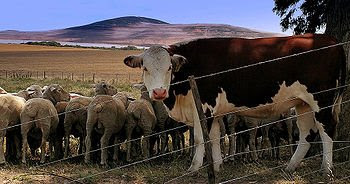Animal welfare groups generally seek to generate public discussion on livestock rearing practices and secure greater regulation and scrutiny of livestock industry practices. Animal rights groups usually seek the abolition of livestock farming, although some groups may recognise the necessity of achieving more stringent regulation first. Animal welfare groups, such as the RSPCA, are often – in first world countries - given a voice at governmental level in the development of policy. Animal rights groups find it harder to find methods of input, and may go further and advocate civil disobedience or violence.
A number of animal husbandry practices that have led to legislation in some countries have been the subject of campaigns in the 1990s and 2000s. Confinement of livestock in small and unnatural spaces is often done for economic or health reasons. Animals may be kept in the minimum size of cage or pen with little or no space to exercise or engage in normal actions or grooming. Close confinement is most common with chickens, pigs, and calves raised for veal. Unnatural living environments may be used for some animals. Even when allowed to move, animals may be denied a natural environment. For example, ducks may be kept in free-range barns but have no access to water in which to swim. Cattle may be kept in barns with no chance to graze. Overuse of pharmaceuticals and hormones is also an issue in large agricultural operations. Intensive raising of livestock may lead to a health problems and the necessity to use antibiotics to prevent disease. In some cases antibiotics and hormones are also fed to livestock to produce rapid weight gain.
Overwork and exhaustion of animals: Where livestock are used as a source of power they may be pushed beyond their limits to the point of exhaustion. The public visibility of this abuse meant it was one of the first areas to receive legislation in the nineteenth century in European countries but it still goes on in parts of Asia. Modification to the bodies of living animals: Broiler hens may be de-beaked, pigs have deciduous teeth pulled, cattle de-horned and branded, dairy cows and sheep have tails cropped, merino sheep mulesed, many types of male animals castrated. Long distance transportation of livestock: Animals may be transported long distances to market and slaughter. Overcrowded conditions, heat from tropical-area shipping and lack of food, water and rest breaks have been subject to legislation and protest. (See Live Export) Slaughter of livestock: Slaughter was an early target for legislation. Campaigns continue to target Halal and Kosher religious ritual slaughter.






